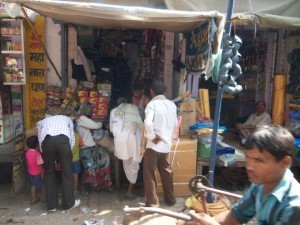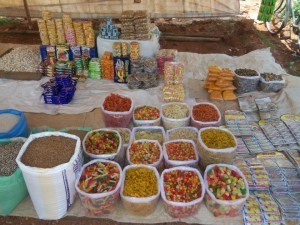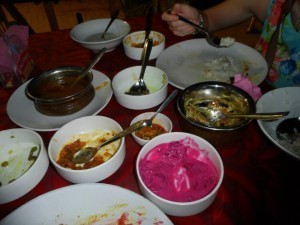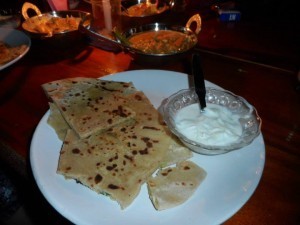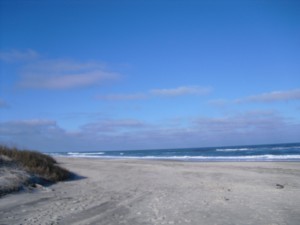Lisa Niver's Blog: We Said Go Travel, page 386
May 31, 2014
Puerto Rico: Filming with Richard Bangs!
When Richard Bangs invited me to travel to PUERTO RICO to film with Orbitz and the Puerto Rican Tourism Board: I SAID YES! Please enjoy Richard’s article about our journey and the many videos from our visit! Lisa
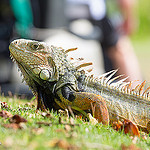 When Christopher Columbus made landfall in Puerto Rico during his second trans-Atlantic voyage, in 1493, a young Spanish nobleman, Ponce de León, some scholars believe, was on board.
When Christopher Columbus made landfall in Puerto Rico during his second trans-Atlantic voyage, in 1493, a young Spanish nobleman, Ponce de León, some scholars believe, was on board.
Rumors of hefty quantities of gold brought Ponce de Leon back, in 1508, where he found an islet with an excellent harbor he named Puerto Rico, or Rich Port. This would become the name of the island, while the town was renamed San Juan. He didn’t find gold, but was named first governor of the new territory, and when he heard stories from Taino Indians about a magical fountain whose waters would rejuvenate those who drank from it, he decided he would seek immortality. Can we fault him?
Today, locals claim the mineral-rich waters at Coamo, about 10 miles east of Ponce in the south of Puerto Rico, are in fact the Fountain of Youth Ponce de Leon sought, though perhaps he didn’t soak long enough, as an arrow squelched his eternity in 1521. But that the belief of the fountain’s powers still exist is evident in its current pricing. Anyone over 65 is free, the theory being, I suppose, that if the wayback waters work, the free-soaking seniors will soon be back as paying customers.
There is something persistently youthful about Puerto Rico. It’s not just that 30 percent of the population is under 25, but rather its potion of nutrient-rich volcanic soil, crisp, clean water, its perpetual June, its healthy outdoor activities, its food, art, and its spirit of dance and celebration that make almost everyone who comes here feel happy and young.
Recovering from a surgery a few weeks back, I find myself feeling a bit broken by time’s wheel, a little superannuated in a sharp winter, when I speak with my friend John Jessey, who offers up an antidote. “Go to Puerto Rico. You’ll feel ten years younger.”
Rather than slouching toward oblivion, or doing a deal with the devil, John’s recommendation seems the enchanting choice, so I book a ticket from Los Angeles for a week-long soak, with my family, including 6-year-old Jasper, and our friends Didrik Johnck and Lisa Niver. We leave passports behind, because Puerto Rico is an unincorporated territory of the United States, a sort of grey-area status where it is not officially a State, but Puerto Ricans enjoy all the benefits of citizenship, save one: Puerto Ricans who live in Puerto Rico cannot vote for the U.S. President in the general elections. And, the currency is the U.S. dollar, which saves all those calculations, and exchange fees that usually end up on post-trip credit card statements. And you can drink the water.
I’m a sucker for touching history, and sought to book the Caribe Hilton Hotel, for its storied past, but it was full, so instead we make way to its sister, the Condado Plaza Hilton, just seven miles from the Luis Muñoz Marín International Airport. I take a room overlooking the aquamarine Atlantic, and with a view of the Caribe Hilton Hotel. 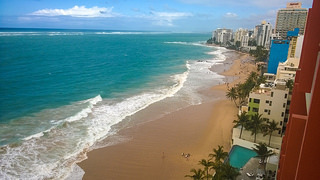 It was Hilton’s first hotel outside the continental United States and made Hilton the first international hotel company. It was the first in Puerto Rico to offer radios in every room and individually controlled air conditioners, and claims to be the birthplace of the Piña Colada. In 1954, bartender Ramón “Monchito” Marrero spent three months creating a medley of rum, coconut cream, and pineapple juice, which launched a Noah’s flood of tropical refreshment, and at least one catchy song. To celebrate, I order one up in the lobby bar. Maybe two. Or four. To be honest, I can’t remember, except that they were yummy.
It was Hilton’s first hotel outside the continental United States and made Hilton the first international hotel company. It was the first in Puerto Rico to offer radios in every room and individually controlled air conditioners, and claims to be the birthplace of the Piña Colada. In 1954, bartender Ramón “Monchito” Marrero spent three months creating a medley of rum, coconut cream, and pineapple juice, which launched a Noah’s flood of tropical refreshment, and at least one catchy song. To celebrate, I order one up in the lobby bar. Maybe two. Or four. To be honest, I can’t remember, except that they were yummy.
The next day, in the first blush of pink light, we translate to the Wyndham Grand Rio Mar Beach Resort, to the east, to play a little golf. Golf here dates to 1958, when Laurance Rockefeller, a pioneer in barefoot elegance, built a resort in Dorado and hired Robert Trent Jones to design its fabled East Course. Now Puerto Rico has 23 courses designed by legendary golf pros, and Rio Mar has two, the Ocean Course, by Tom and George Fazio, and the River course, by Greg Norman, both 18 holes. It’s on the 16th hole of the Ocean Course I meet Jesus Rodriguez, younger brother to Chi-Chi, who is the groundskeeper and resident merry prankster. He shows us how to putt a coconut, and mimics the famous victory dance of his legendary brother. And he offers to arrange a meeting with his brother, over at the St. Regis Bahia Beach Resort & Golf Club, with its 18 holes by Robert Trent Jones, Jr., set along two miles of private beach, a former coconut plantation.
I meet Chi Chi on the lushly manicured lawn beyond the lobby, and he looks dashing in a fierce blue jacket, yellow tie and signature Panama hat. His eyes are quiet as a pond; his grin electric. He’s 78 years old, but has the spark and energy of someone half his age, yet another testament to the youthful stylings of Puerto Rico.
Chi Chi says he was born into a dirt poor family, one of six siblings. They struggled to put food on the table. When he was seven, he worked as a water carrier on a sugar plantation. One day he wandered onto a golf course. When he learned the caddies were earning more money than he, he decided to switch careers.
Chi Chi would take a branch from a guava tree and turn it into a golf club. Using a metal can as a “golf ball” he would practice what he had seen “real” golfers do. By the time he was 12 he scored a 67. He went on to trophy scores of tournaments, including 22 wins on Senior PGA Tours, and became the first Puerto Rican inducted into the World Golf Hall of Fame.
After mahi mahi tacos with Chi Chi at Seagrapes it’s time to undo time, so we head back to the Wyndham, where we take a jungle walk on the grounds, and end up at the estuary of the Mameyes River, where paddle boards and kayaks await. We scull about, among the mangroves for a sweet hour or so, and then walk the beach back to the pools for a mojito (this island is, after all, the largest producer of rum in the world) before thinking about dinner.
The sky lightens slowly the next morning, and time pours like treacle as we linger through breakfast. Afterwards, we travel just a short ways to the earthy embrace of El Yunque, the only tropical rain forest in the US National Forest System. The air seems to be made of a different and more fragrant substance than at home. Everything is pungent and moist.
This is where the wrinkles wash away, with over 200 inches of rain a year. We set off on a short hike through a tangle of trees that look as though they awoke in the middle of the night and didn’t have time to fix their hair. We pass orchids, giant tree ferns, oversized snails, gushing waterfalls, all the while cupping ears to the two-note chanting of coquí tree frogs, and the squawks of unseen parrots.
We next head over to the small town of Fajardo and the mega resort El Conquistador (a Waldorf Astoria property), which mostly sprawls atop a 300-foot-high cliff overlooking the Atlantic. It takes a tall pile of words to convey this 500-acre retreat. A tram trundles down to a marina and the 2.4-acre Coqui Water Park, a font of wading pools, slides and water rides, a jungle-type rope bridge, and a lazy river where Jasper and I grab a tube and float and splash and cachinnate for an hour. If ever a kid’s paradise, this seems it, for children from two to a hundred and two.
As the evening tips over into darkness we leave Jasper, exhausted and sound asleep in the Wyndham, and head into the city, which puffs up like a sail with its nightlife. We hit a few bars, boîtes and clubs, where the reggaetón and salsa swirl around us in a fluid ribbon. The outfits on parade are meant to make eyeballs explode, tropical tornados of cadmium and cobalt, magenta and marigold…the full rainbow of humanity struts here.
Puerto Rico is a kind of crossroads of the Caribbean. Its forts, castles, walls and batteries were originally designed to protect the island from invaders, but when the residents felt secure, it became a way station for seafarers bringing new ideas, art, lifestyles and food. It was a place to share experiences, and embrace diversity. And tolerance was the mortar that held it together. Today it is an island of hospitality, safety and open-mindedness. And one vivid indicator of this is the vibrant LGBT scene.
We meet Mr. Gay World Puerto Rico, Juan Ortiz, visiting from New York, who shares how Puerto Rico has such open arms and opportunities for all lifestyles. We meet a few lesbians who agree, and even a gay couple from New York on the eve of nuptials, which have been elaborately designed by one of the top wedding planners in one of the best hotels.
In the bath of morning sunlight, before pointing the needle of curiosity to the west, I step through the heavy wooden door of one the many specialty coffee shops, and order up a cup of arabigo Pomarrosa. What a brew! All other coffees drip with envy. I ask its origin, and am told it is from a small farm in the middle mountains of Puerto Rico, in the shadow of the island’s highest peak, Cerro de Punta, some 4,357 feet above sea level. I vow to find this place.
But first we set out for the far coast, the surfing, kite-boarding and watersports capital of the island. It’s a stunning drive through the folded complexities of the island, through tropical parklands and by wild seascapes, through towns humming with optimism, past the dance of life that is Puerto Rico. Come late afternoon we pull into the Royal Isabela, a sprawling resort and golf course at the edge of a 300′-high bluff overseeing the crashing Atlantic, looking more like a link course at the edge of Ireland than a tropical fairway.
Here we meet Charlito Pasarell, co-founder of the resort along with brother Stanley, who bounds over to meets us by the clay tennis courts. Charlito was the No. 1 ranked men’s singles tennis player in the United States in 1967, and was last year inducted into the International Tennis Hall of Fame. He practically gleams with a ruddy vitality and mental crackle that belies his 70 years.
Charlito gives us a grand tour on a golf cart, rolling by native grasses, sod-faced bunkers, and wind-twisted trees. He says he discovered this stretch of rugged coastline while overpassing on a helicopter in 1989, and envisioned creating “the Pebble Beach of the Caribbean.” He set about buying the land, piece by parcel, until he patched together some 1,800 acres. Every aspect of Royal Isabela’s design has evolved out of the land itself, and he has gone to great lengths to protect the existing contours, natural features and native flora and fauna along the way. Conventional rules of golf architecture did not apply. Even the 20 freestanding luxury casitas, terraced into a hillside, blend in. They are around here somewhere, he assures.
Charlito takes us to an overlook at the 12th hole, and points out a prominent rock that juts from the steep cliff below. It’s the profile of a Taino Indian warrior, he says, though its well-defined angularity is softened by the afternoon light. As Charlito traces the features with his hand, the aspects come into focus, unbroken and ageless, as though forever dipped in the fountain of youth. Below is the hurtling seam where water bashes stone, and to the side a long stretch of native dunes, and beyond the white lined surf where Humpback whales are fleeting by.
He also shares that he and his brother own a river plantation just across the road with organic farms that produce food for the restaurant and staff. It also has facilities for hiking, mountain biking and horseback riding, with a network of paths and converted rail trails, plus stand-up paddle boarding and other water sports on the Guajataca River, all conspiring to keep guests fit and young.
We dine that night with Charlito at an outside table at The Restaurant at La Casa, on a patio that wafts with the fragrance of the nearby higuerillo trees. Over fine wine and something called “airline” chicken (not because it comes from United or American, but because the breast comes with a drumette attached and protruding, which could be described as looking similar to the tail of a plane). Charlito seasons the plate with tales of his great grandfather, Dr. Manuel Zeno Gandía, who published the first novel by a Puerto Rican author in 1894, and was an early champion for Puerto Rico independence. So, Charlito’s blood mixes literature, politics, sports and recreation, a concoction that seems to be a drink well-served in Puerto Rico.
It’s dark when we finally bid goodbye…one of the consequences of the locavore and slow food movements is a deep-into-the-night dinner…and we hit the road to our next stop, the town of Guánica on the south side of Puerto Rico. It’s midnight when we pull into the Copamarina Beach Resort, and with a welcoming chorus of coquí frogs we make our way down salty paths to our rooms and collapse.
A honeyed light gushes in when I open the shutters next morning, and for a second I have to shield my eyes. Just beyond a powdery beach the deep blue Caribbean laps, a graceful swooshing sound mixed with the sounds of children skylarking. Ponce de Leon first landed near here, and it’s easy to see why he stayed. This is a place that slows down the thoughts, and perhaps the aging process. It’s a popular place for destination weddings (as are most of the resorts in Puerto Rico), and we bump into a handsome couple from Ohio, where it is nine degrees and snowing, who just tied the knot here, and are over the moon about the experience, and the grouper mofongo at the café.
Lisa, who has dived all over the world, but never Puerto Rico, decides to head out and plumb The Wall, a cliff of coral some 22-miles-long dropping down to a depth of over 1 500 feet, with a local firm, Aqua Adventure. I decide to go and hike the nearby Guánica Dry Forest, a UNESCO Biosphere Reserve and State Forest, and considered to be the best example of subtropical dry forest in the Caribbean. How could this island harbor so much diversity? A couple of enormous days ago we were wading through the theatrical vegetation of El Yunque, and now we’re in a desert festooned with Spanish dildo cacti, natural Bonsais, and tangles of scrub and vines glowing in the long tapers of sunlight. It’s not that dissimilar, though, to how the Sierras split California, with fertile valleys on the western side, and desert in the eastern rain shadow. Here the Cordillera Central is the Sierra Madre.
We gather again for dinner, and compare notes over plates of mofongo stuffed with grouper in garlic and lemon sauce. Lisa, the jaded diver, is all sparkle and grins, describing the reefs, the brain coral, the caves, the green moray eel, the angel fish, the porcupine fish, the lobster, the reef sharks, and the sea turtle named Lola, and all else that brushed past her in the 100′ dive. “I’ve dived in six continents. This was the best dive ever,” she blurts.
We decide to divide for the next day as well….Lisa will check out the Fountain of Youth (not that she needs it…she has more energy than a nuclear power plant), and split the wind at the highest and second-longest zip-line on earth at Toro Verde Nature Adventure; the family and I will visit Puerto Rico’s second-largest city, Ponce. Founded in the late 17th century, the city experienced a commercial boom in the 19th century, then declined so quickly no one had time to tear anything down. The center of town is crowded with wedding-cake colonial mansions, strutting with balconies, balustrades, and bas-relief. Then there is the whimsical Arabesque confection, the Parque de Bombas, a bright, red-and-black striped wooden firehouse, amidst the neoclassical and Spanish-style buildings. It is the most attention-grabbing site in Ponce, and maybe all of Puerto Rico, and where, on the Plaza las Delicias, we decide to picnic and gawk.
After Ponce we wind into the mountains to the recondite Hacienda Pomarrosa, where the unspeakably good coffee I had in San Juan is produced.
Stepping from the car the air is so fresh it makes me dizzy for a moment. We meet up with proprietors Kurt Legner and his son Sebastian in the tiny tasting room, where Kurt gives a rattling good history of coffee, from Ethiopia to Arabia to 18th century Puerto Rico, when its coffee was the favorite of European courts.
And then Sebastian takes us on a walk through the farm, showing off the healthy plants and the shiny little beans, and the various steps he takes to harvest, clean, and roast the coffee. All of the coffee is processed in small batches. Once the picked beans arrive at the little processing plant, they are peeled by environmentally friendly machinery.
After the coffee is peeled, it rests for about eight hours in a water bath. From there it goes to the hot-air drier (no sun drying here…too much rain). After about 24 hours, the coffee beans are stored in a humidity controlled warehouse for safekeeping. The final stop: back at the tasting room, where a cup of joe for the road fills my head to the brim, like a honeybear, with some sort of transcendence. “Life is beautiful. Coffee makes it even better,” outpours Sebastian.
We all rendezvous at the Best Western Condado Palm, a value hotel (with the largest bedrooms we’ve seen yet) just steps from the beach and walking distance to the trendy shops and restaurants of Condado. At the bar Lisa shows up looking younger and more effervescent than ever, as though years had drained away in a few hours, like water from a punctured container. It is all the result, she offers, of combining zip-lining with her soak at Coamo, a thrilling and effective concoction.
For the final day we make our way to Old San Juan, the 500-year-old Spanish outpost designed to fend off pirates, buccaneers and privateers. They were all looking to pilfer the gold, silver, gems, spices, and furs from Mexico, Central and South America, stashed here for the final trip to Spain. Stepping through the San Juan Gate today is like stepping into a magic glass. It is hard to preoccupy with the concerns of the world once through this gate, for concerns are always about what will happen in the future, and in Old San Juan the future will never come, and the past will never disappear.
This seems a world where everything fits together. I thread through narrow streets cobblestoned with the ballast from early ships. On one side there are thick, outward-sloping walls, dotted with cannon embrasures; and on the other, neat pastel blue, yellow, and pink façades. Street cats curl and uncurl around the doorways. It’s hot in here…the sun seems to reach through my skin to my bones… so we stop at Caleta de las Monjas 9 and have a few limbers¸ frozen fruit cups, that are instant refreshment.
Jasper is inspired, and standing at an overlook to the sea, he recites a poem he composed about his experiences in Puerto Rico:
Birds chirp, lizards run
Coconuts roll, fish splash
Crabs skitter, frogs hop
Sometimes, all of them make a band
It’s getting late, and we have to head to the airport, but first I insist we stop at a little shop called Olé, where they sell hand-crafted Panama hats woven from fine-textured paja grass. There are hundreds on display, and I try a score before one seems supreme. Feelings of contentment are woven from fine and unexpected filaments, and there is a joy when I gaze into the mirror. The saleswoman blocks the hat to fit the shape of my head. Then she fastens a customized band around the rim, and snugs the finished product in place. Finally, she steps back, and with a broad grin says, “It makes you look ten years younger.”
The post Puerto Rico: Filming with Richard Bangs! appeared first on We Said Go Travel.
May 30, 2014
Namaste India
After vowing that we would be on full alert, all systems go, eyes peeled and ears cocked, money changed, visas opened and as on guard and vigilant as we could possibly appear- Delhi airport was nowhere near as scary, hectic or confusing as we were incessantly warned it would be. In fact, it was one of the calmest, most relaxed and organised arrivals hall of our whole trip. Our first impression of India had caught us completely off guard.
So many people had made cutting comments, taken sharp intakes of breath and mumbled something about us ‘ being in for a shock’ that I had truly come to believe that we were. ..and not in a good way. One particularly pompous character had even chatted to us about the backpacker suicide rate in India over breakfast, tutting at our laughter and warning us of the dangers of being ‘naive’ to its evils. We did dare to think that, having just spent 2 months in neighbouring Nepal, we might not find it as difficult, but even that was beginning to ring hollow. Frightened that it may actually be as scary as people kept arguing, we had even booked our first night’s accommodation in Delhi. We.were.prepared.
‘Really? You like to live there?’ Approximately one hour later and we were sat in the foyer of our Karol Bagh hostel, drinking a Tiger beer and trying to persuade our new friend Arrun that Birmingham is not the most boring city in the UK.
‘It is just so quiet. So boring. I missed Delhi after like, one day.’
I smiled into my glass.
Our Bangalore born taxi driver had been hilarious, regaling us with tales of uber- famous tourists he had driven and refusing to believe that we were not upset about being unmarried 24 year olds. He’d phoned the hostel to let them know we were en route and practically planned our India itinerary for us. With an aunty in almost every city, and a family reputation for the best chai in town, he seemed like a good guy to have picked for our very first encounter with the local people of India’s capital. The hostel owner refused to let us pay for our taxi, refused to let us carry our own bags and made us promise that we would join them for welcome beers after a ‘nap-sleep’. Not ones for turning down naps, beers or new friends, we did.
It took India approximately one evening to completely steal my heart. Too excited about our first meal to accept Arun’s invitation to the ‘coolest bar in New Delhi’, we had opted instead for the very local Guru Nanak market in Karol Bagh. A labyrinth of dusty street stalls, there was something going on in every single nook and cranny. Men crowded around samosa stands like they would a bar in England, supping tiny paper cups of chai and bellowing with laughter at every given opportunity. Girls shimmied up and down the pathways in reds, golds, greens and silvers- their shalwar kameez trousers sweeping dust from the ground. Kids darted between tables, shiny-eyed.
There were all kinds of shops selling all kinds of junk. Motorcycle parts, plug sockets, yarns of glittery cloth, dried flowers, rusty medicine bottles, ironworks. Hallucinatory images of Shiva, Brahma and Vishnu in all their glory. Tailors, barbers, fruit-sellers. Everyone worked to the obliterating noise of car horns and, in the midst of all this chaos, cows sauntered between cars and stands, occasionally knocking over bicycles. Flies buzzed in the smog and the heavy scent of masala spice lingered. For our deciding-what-to-order snack we bought samosas from the busiest stall on the market. Served in scraps of maths text book paper and drizzled with chilli sauce, they looked every bit as tasty as I had imagined. The crowd watched bug-eyed as we took our first bite, and then belly laughed with glee as we demonstrated our approval. Delicious.
Spurred on by the other snackers, we settled in a tiny side-street cafe for our dinner. Clearly bewildered as to why we had chosen his humble establishment for our tea, the owner recited the menu in his very best English and then decided we should definitely have the channa masala and rotis. We did not disagree, ate like kings and reassured him we would be back for breakfast the next morning. He nodded and smiled, laughing as we groaned with being too full and gushed about it being the best food we had ever tasted. Chased by the smiley rickshaw drivers, we made our way back to the hostel to sleep off our feast.
We had arrived.
Namaste! Hannah Thompson-Yates
The post Namaste India appeared first on We Said Go Travel.
May 29, 2014
Why You Should Go to Melaka, Malaysia – Video
As everyone passes through Kuala Lumpur — either for a few days of sightseeing, dealing with visa issues or simply stopping by on the way to fly to somewhere else — Melaka, it’s little brother to the south, often gets overlooked.
It’s not a city in the traditional, busy sense. There’s this sense of history and charm that breathes through the place and keeps you captivated for days (or weeks if you let it.) Life passes at a slower, deliberate pace and while you’re just about 2 hours from the traffic and hawking and noise of Kuala Lumpur, you may as well be worlds away.
So what makes this Southeast Asian gem so unique?
The food
According to the locals, this is your #1 attraction in Melaka, and they have good reason behind that claim. Melaka has some of the best food I’ve had in Southeast Asia, and definitely in Malaysia. In Melaka be on the lookout for laksa.
 Largely because of its premium geographical location right along the strait between Malaysia and Indonesia, Melaka has been a meeting point for several cultures to converge. One of the more notable communities is the Nyonya Baba – descendants of Chinese immigrants who have intermarried woven culture and customs with the native Malay. This group took the typical Malaysia dish of laska – a spicy noodle soup – and put its own regional spin on it. Baba Laksa is spicy with a good portion of coconut milk in the broth, while Nyonya is a bit more sour. Local haunt Jonker 88 specializes in a Baba Laksa Kahwin Nyonya Asam Laksa, which is an incredible mix of the two.
Largely because of its premium geographical location right along the strait between Malaysia and Indonesia, Melaka has been a meeting point for several cultures to converge. One of the more notable communities is the Nyonya Baba – descendants of Chinese immigrants who have intermarried woven culture and customs with the native Malay. This group took the typical Malaysia dish of laska – a spicy noodle soup – and put its own regional spin on it. Baba Laksa is spicy with a good portion of coconut milk in the broth, while Nyonya is a bit more sour. Local haunt Jonker 88 specializes in a Baba Laksa Kahwin Nyonya Asam Laksa, which is an incredible mix of the two.
Colonial Satay is also a popular local haunt because of its secret family satay sauce. Be prepared to wait for up to 3 hours for a table though!
Jonker Street Night Market
Every Friday and Saturday night the main street transforms into an amazingly busy and festive night market. There are food stalls everywhere with all-things-fried, soups, noodles and laksas and even a sushi cart. The street is contained by two must-see attractions. At one end (nearer to the Tourism office) there is a man who can poke a hole in a solid coconut with his finger, and amasses a pretty big crowd each evening at about 8:30.
Melaka Straits Mosque
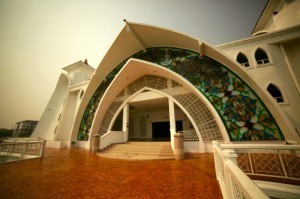 While it’s a bit of a bike ride (though easy to find,) the Melaka Straits Mosque is a massive, open-air building that peers out onto the ocean from its own man-made island. It’s built on stilts and appears to be floating on the Strait itself. Weekends tend to attract more visitors, but on a weekday you could have the place to yourself, dwarfed by the vacuous cavern with nothing but open water ahead.
While it’s a bit of a bike ride (though easy to find,) the Melaka Straits Mosque is a massive, open-air building that peers out onto the ocean from its own man-made island. It’s built on stilts and appears to be floating on the Strait itself. Weekends tend to attract more visitors, but on a weekday you could have the place to yourself, dwarfed by the vacuous cavern with nothing but open water ahead.
The Strait of Melaka itself is one of the busiest waterways in the world, with nearly 90,000 vessels passing through annually between the Indian and Pacific Oceans. If you’ve got good weather one afternoon, there’s a small stretch of beach near the mosque where you can sit and watch the ships go past as the sun sets over the strait.
The Stadhuys
Known as the Red Square, it’s the oldest remaining Dutch site in Asia, and offers a beautiful view of the city and out into the Strait of Melaka.
Chinatown
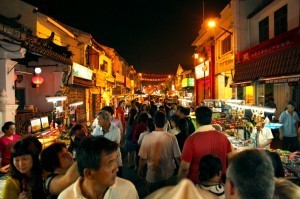 Parallel to the popular Jonker Street is Melaka’s own Chinatown. Unlike the Chinatowns of places like Singapore or Kuala Lumpur where hawkers are dangling fake Ray-Bans and Beats headphones in your face, Melaka’s Chinatown is quiet and full of culture. It’s home to the oldest Chinese temple in Malaysia and the only shoemaker in the world who still makes the shoes worn when foot-binding was still heavily practiced in China (as souvenirs!) There are also several stores that sell cardboard affects like houses, golf clubs, cars and money that some Chinese will buy and burn all together in a box for passage into the afterlife.
Parallel to the popular Jonker Street is Melaka’s own Chinatown. Unlike the Chinatowns of places like Singapore or Kuala Lumpur where hawkers are dangling fake Ray-Bans and Beats headphones in your face, Melaka’s Chinatown is quiet and full of culture. It’s home to the oldest Chinese temple in Malaysia and the only shoemaker in the world who still makes the shoes worn when foot-binding was still heavily practiced in China (as souvenirs!) There are also several stores that sell cardboard affects like houses, golf clubs, cars and money that some Chinese will buy and burn all together in a box for passage into the afterlife.
The Melaka River
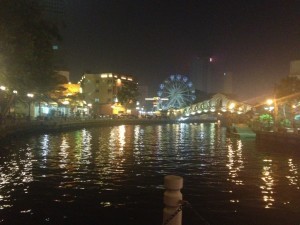 The Melaka River bisects the town as it spills out into the strait – and each riverbank is lined with quaint cafes, churches, mangroves, villages and old historic buildings.
The Melaka River bisects the town as it spills out into the strait – and each riverbank is lined with quaint cafes, churches, mangroves, villages and old historic buildings.
Boat cruises go along the river all day until about 10PM for 15MYR a person, but you can also hire bikes from many hostels and shops around town and bike along the banks.
Nightlife
With its deep-rooted Islam, Malaysia isn’t really a party-center to begin with, but Melaka has its nice local haunts. At the Jonker Street Market and any hawker centers, locals will be sitting around sharing beers late into the evening, and sleepy bars are dotted around town. If you’re looking for a true dive, check out Shantaram on the same road as Chinatown. Touting “hours of beastness” from 9-2, its outer décor is a prelude to the personality of the place.
Enjoy more about Melaka in our city overview video!
About Don’t Stay Put
Don’t Stay Put is a new kind of travel blog featuring high-quality, professionally-produced videos about the culture, sights, food and everything else we encounter along the backpacking trail, all as told by the travelers and locals themselves.
The post Why You Should Go to Melaka, Malaysia – Video appeared first on We Said Go Travel.
May 28, 2014
Wandering in Tuscany this Summer!
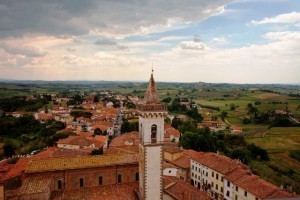 Wondering where to Wander this Summer?
Wondering where to Wander this Summer?
It is nearly June and I am wondering where to go this summer. My very close friends from my days as Julie McCoy, Assistant Cruise Director on the Love Boat, invited me visit them in Sardinia. I have never been and I cannot wait to go.
I am trying to decide what to do in Italy before I meet them in Sardinia. I want to go back and sit in a café on the island of Ischia and watch the water while sipping prosecco. But what else to do that is new to me?
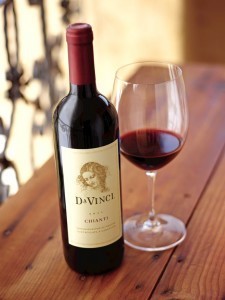 I did research about Italy and I am drawn to Vinci, Tuscany. I want to sip Chianti where Leonardo Da Vinci is from. I wonder what he and I would talk about. He was so curious about everything, always sketching and thinking and drawing. I would definitely ask him about science and art and I am certain the beautiful area would inspire us. I wonder what he would think of the internet! Leonardo Da Vinci once said, “The discovery of a good wine is increasingly better for mankind than the discovery of a new star.” I want to go see if I agree! I think I would sit and sip and feel his enthusiasm.
I did research about Italy and I am drawn to Vinci, Tuscany. I want to sip Chianti where Leonardo Da Vinci is from. I wonder what he and I would talk about. He was so curious about everything, always sketching and thinking and drawing. I would definitely ask him about science and art and I am certain the beautiful area would inspire us. I wonder what he would think of the internet! Leonardo Da Vinci once said, “The discovery of a good wine is increasingly better for mankind than the discovery of a new star.” I want to go see if I agree! I think I would sit and sip and feel his enthusiasm.
Do you want to share your creative genius? You could win a trip to Vinci! For the fourth consecutive year DaVinci Wine announces the launch of the Storyteller Experience, inviting creative individuals to apply to experience a week in Vinci, Italy, the home of Chianti, birthplace of Leonardo da Vinci and home to and DaVinci Wine’s thriving cooperative of over 200 growers. Enter by May 31!
The Italians have la dolce vita or the sweet life. I cannot wait to return to the place where stopping in the street to say hello is much more important than rushing about. I want to savor the fresh tomatoes, eat homemade pasta and gelato and sip chianti with the memory of Leonardo!
This is a sponsored post DaVinci Wine and is meant for my readers age 21+.
Photo credit: DaVinci Wine.
The post Wandering in Tuscany this Summer! appeared first on We Said Go Travel.
Hatteras Escape in North Carolina
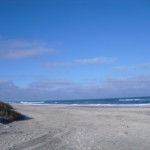
The world is a busy place, so much to do, so much to be. If we are very lucky in life, we find a destination that frees us, if only temporarily. This is a destination we can return to again and again, both physically and mentally, because we find a certain magic there, something extraordinary. Essentially, we ‘fall in love’ with this particular place in much the same way that two people fall in love. We don’t always know why. There is a certain chemistry. Something clicks. We are never quite the same again.
For me, this place is Hatteras Island, located in the Outer Banks of North Carolina. This barrier island is only about fifty miles long, with an average width of just two-thirds of a mile. Cape Hatteras National Seashore takes up about two-thirds of the island, so it is a place protected from too much development.
This island is a gem set into the sea. It is approximately thirty miles from the mainland. As you cross over Oregon Inlet via the Herbert Bonner Bridge, you feel as though you are coming to the end of the earth. You travel a sandy road with water on either side for miles and miles. On one side is the Atlantic Ocean and on the other side is the Pamlico Sound. If you open your car window, you will feel the ocean breeze. It is quite the enchantress, that ever-changing Hatteras wind.
Upon my first arrival in Hatteras, the mood of the place affected me deeply. There was the long stretch of solitary beach, and beach houses that seemed to sit atop the dunes like sand castles on stilts. Everywhere I looked, it was a painter’s dreamscape. In an almost haunting way, the light over the water changes continuously. The sky and sea are a multiplicity of colors depending on the weather and the time of year.
In Hatteras, the natural world is your compass. Storms brew and the landscape changes accordingly. Highway 12 gets covered over with sand and the only road on or off the island is closed. It is the very isolation of the place that helps retain its raw and rugged beauty. Hatteras is not just another beach town. It is a place that touches your soul because it seems to have one of its own.
If you are looking for adventure, you can find it here. Hatteras is a play-ground for kite-boarders, surfers, and wind-surfers. You can go snorkeling, sailing, kayaking, or canoeing. It is a paradise for fisherman or bird-watchers.
My Hatteras adventure story is of a quieter nature. I like to walk along the sandy shore and gaze out at a glittering sea. I search for treasure, pieces of shiny sea glass, or shells, polished by the pounding surf. I like to watch the sun rise and set, a fireball blazing over the ocean, radiant light spilling everywhere. I am a captive audience for the dolphins that play in the waves or a crowd of sea gulls who gather by the pier.
The ocean roars and I listen. It is a conversation of sorts, but I am silent. It is a time for me to think new thoughts and dream new dreams. Sometimes, in the thunder that is the sea, the rest of the world seems suddenly still.
It is quite a journey to a place like Hatteras, a place where the fingerprints of God are more evident than the fingerprints of man. I can set my watch to the rhythm of the place, island time…sunrise, sunset. For me, it was love at first sight. My only heartbreak is when I have to pack up my bags and say goodbye to the island each time I leave.
But as in any good love story, there is conflict. No sooner am I home, than I yearn once again for this beautiful island, this kingdom by the sea. That Hatteras wind will haunt me until I return…
About the Author: Linda Frost Raha is an aspiring writer. I am working on a novel that is set in Hatteras, North Carolina. My favorite places are always close to the sea.
Thank you for reading and commenting. Please enter our next Travel Writing competition and tell your story.
The post Hatteras Escape in North Carolina appeared first on We Said Go Travel.
The Tsar’s Guide to a St Petersburg Tour – Part One
How to See the City
To receive the best experience and information about all the attractions in St Petersburg it is best to use the services of a guide. One example is Dancing Bear Tours which provides shore excursions for cruise ship passengers and private tours for land passengers. Taking a private tour, rather than a large group tour, gives you the chance to see St Petersburg your way, with a flexible and customized tour schedule, and individual attention with the freedom to ask lots of questions and take lots of photos without being pushed along in the herd of a large group tour. A private tour also costs approximately the same as a large group tour and so why not treat yourself to a privately guided tour that is fit for a Tsar.
Using a private guide to see the city also means you can choose the attractions which are most interesting for you. With so many amazing attractions in St Petersburg the large tour companies usually send visitors to the main attractions, but with a private guide you can choose from the full list of attractions in St Petersburg and build a customized tour with your interests in mind.
What to See
St Petersburg has more than 89 museums and is full of attractions which will deliver a cultural insight into Russia that you will find no where else. The issue is choosing the most interesting attractions for your best experience. Here is a list of some of the most popular attractions that are considered “must-see” in St Petersburg.
State Hermitage Museum – This is one of the largest museums in the world and contains approximately 3 million items. If you spent 1 minute at each item it would take you nine years to see everything the Hermitage has to offer.

Yusupov Palace
Yusupov Palace – To feel the opulence of the Tsar’s and the riches of Russia every tourist should visit Yusupov Palace. This is one of the last standing mansions in the city and every room is bathed in luxury. It is also the place where the famous Russian mystic Grigory Rasputin was murdered. During special tours of the palace you can visit the actual room where he was poisoned and here the fascinating story about his life with the Tsar’s and his mysterious death which ended his influence over the royal family.
Church of Our Savior – This church is also referred to as the Church of Our Savior on the Spilt Blood as it was the location for the assassination of Tsar Alexander II in 1881. This is one of the best places to make a royal photo stop and the church is one of the most iconic and well-known places in Russia.

View from Peter and Paul Fortress
Peter and Paul Fortress – This is known as the birthplace of St Petersburg as Peter the Great founded the city on this location in 1703. There are several museums inside the fortress including a famous prison. You can walk along the top of the fortress and take amazing photos of the Neva River, bridges, and Winter Palace.
Catherine Palace & the Amber Room – This palace truly shows the wealth of the royal family as over 100 kilograms of gold were used for the facade and statues the line the outside of the palace. Inside each room was painstakingly redesigned after the palace was destroyed during WWII. One of the most interesting rooms you will see is the Amber room. It is one of the greatest treasures stolen by Nazi Germany during WWII and the original has never been found. The replica took 24 years to make and cost millions of dollars to finish.

Fountains of Peterhof
Peterhof – Just outside St Petersburg you will find the fountain kingdom of the Tsar’s which is considered the “Russian Versailles” for the grand scale of fountains, statues, and gardens. Watch out for the trick fountains that might surprise you as you wander the trails in the different gardens. The best way to go to and from Peterhof is the hydrofoil services that transports you quickly and easily between Peterhof and the center of St Petersburg.
Boat Tour – One of the best ways to see the center of the city is by taking a boat tour. During the summer season boats take visitors at night to watch the various bridges of the city open during the “White Nights” period when the sun doesn’t quite set over the horizon and creates a romantic and enchanting orange glow in the sky. To make this boat trip truly in the fashion for a Tsar, choose one of the boats that provides live music and food.
Continue to The Tsar’s Guide to a St Petersburg Tour – Part Two
The post The Tsar’s Guide to a St Petersburg Tour – Part One appeared first on We Said Go Travel.
May 27, 2014
New Hampshire: Fully Alive in the Dead of Winter
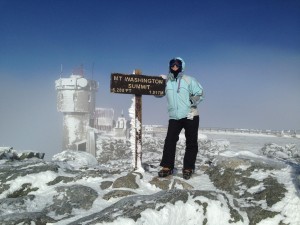 Each night on Mount Washington, I set my alarm for 6:30 a.m. If a sunrise is happening, I have to see it. If the weather conditions are bearable – say, above minus 20 F, with winds in the 40 to 50 mph range – then I must get outside to witness the dawn over the Presidential Range.
Each night on Mount Washington, I set my alarm for 6:30 a.m. If a sunrise is happening, I have to see it. If the weather conditions are bearable – say, above minus 20 F, with winds in the 40 to 50 mph range – then I must get outside to witness the dawn over the Presidential Range.
As I brew coffee, I check the monitor: visibility, 60 miles. Not 120 miles, but better than 1/16 of a mile. Time to move. I pull on my snow pants, heavy boots, multiple layers and a ski parka, then head upstairs. By the door, I attach microspikes to my boots and pull on my mask, goggles and gloves, then step outside.
The wind pushes icy shards into my cheeks. As I step further away from the protective shelter of the building, a wave of wind pulls at my ski poles and threatens my balance. I brace myself and step forward into the rosy light. I am exactly where I want to be, fully alive in the dead of winter.
During this stay on New Hampshire’s highest peak, I am working as a volunteer cook at the Mount Washington Weather Observatory. The mountain is “only” 6,288 feet high, but has a reputation for the world’s worst weather. Until recently, Mount Washington held the record for the highest recorded wind speed, a 231-mph gust clocked back in 1934. Although Mount Washington is often crowded in the summer, thanks to an auto road, cog railway and many hiking trails, the weather conditions are constantly changing, making it a dangerous place. More than 130 people have died here. Spending a week here in January is a bit like spending a week in Antarctica, without the long plane flight.
I love the simplicity of my days at the Observatory. A friend and I work together, baking sweet breads and desserts, serving up the occasional lunch for 15, and cooking dinner for the staff. For entertainment, the cramped quarters have a television, Wi-Fi, plenty of books, and a cat. All nice to have, but not necessary, because I’m here to seize moments and experience extremes: sustained high winds, bitter cold, blue sky afternoons, gray mountain fog, crystal clear night skies.
At least once a day, we head outside into the subzero cold for a short jaunt. We tromp around the summit, take photos, and chat with the small stream of winter hikers who make their way here on clear days. I admire their stamina and ability to use an ice axe, if they should slip while hiking down the steeps of Lion’s Head. But even though I am a hiker myself, I don’t envy the hikers. I’m already here. And I get to see the sunset.
Every day, I plan ahead for sunset. We serve dinner at 6 p.m., after the observers have finished their 12-hour shift. Sunset begins around 4:45 p.m. In the afternoon, I prep the salad, chop up meat, stir sauces. Then it’s time to pull on the snow pants and head upstairs.
On day four, sustained winds of 100 mph blow at the mountain. Two observers decide to make an attempt at the Mount Washington Century Club. To earn membership, you must make your way around the Observation Deck during 100-mph winds. No holding onto the railing, no sitting down, no crawling. You have to make it on two legs.
Why not give it a try? I pull on my gear and step into the “A frame” structure that offers shelter from the wind. The boys dance sideways across the deck so as to create a narrow profile. I try to follow their example. The wind is behind me. Quickly, I realize that the key to not getting blown away is to keep my feet solidly planted on the ground and take micro-steps forward. But moving through the wind is like pushing against a wall. I make it to one end of the deck and turn around. Now, facing the full force of the wind and breathing hard, I try to inch forward, but without success. I’m not to going to make it, not today.
I sit down on the pavement and try to crawl towards the A frame. The wind is a mighty force. Rethinking my strategy, I turn my back to the wind, and begin a backward crab walk that propels my body one concrete tile at a time. Behind me, the observers have almost made it, but then a 121-mph gust knocks one guy ten feet across the deck.
I lean back into the wind, which holds me as if I’m sitting in a big chair. The wind chill is minus 76 degrees, but I’m sweating from exertion. I wave my arms and whoop.
By Diane Fallon
The post New Hampshire: Fully Alive in the Dead of Winter appeared first on We Said Go Travel.
The Winners of the 2014 Inspiration Travel Writing Contest
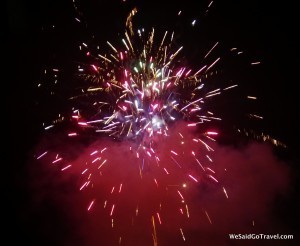
Thank you to all the writers who participated in our 2014 Inspiration Travel Writing Contest! We hope you will share more stories with us. The 2014 Independence Travel Writing Contest opens today and closes July 4, 2014.
Five hundred and five writers from fifty-five nations participated in this contest. Over one thousand writers from over seventy-four countries have written about their experiences and transformations all over our planet. Click here to read the 50 entries from our finalists.
AND THE WINNERS ARE:
First Place Winner is Gabriela Denise Frank, a Detroit native and Seattle resident. Enjoy her article about Colombia, “Echar Los Perros“
Second Place Winner is Ellen Goodlett from New York City. Enjoy her article about Iceland, “Snorkeling with Vikings.”
Third Place Winner is Sophie McGovern from England. Enjoy her article about Peru, “Tiger’s Blood with the King of Hearts.”

Badges for each participating writer will be available soon. Thank you to everyone who participated by writing, reading and sharing! Lisa
Honorable Mention:
Anette Lillevang Kristianse from Denmark: “Poetry in Sand“
Asia Nichols from the United States: “The Pedaling Poet and the Perfume River Vietnam“
Klaudyna Szewczyk from Poland: “Ukraine, Tustan: Stand Here.”
We really appreciate everyone who shared, tweeted, promoted and participated in our Travel Writing Contests. We hope you will join in our Independence Travel Writing Contest.
Thank you to our esteemed judges!
Richard Bangs, the father of modern adventure travel, is a pioneer in travel that makes a difference, travel with a purpose. He has spent 30 years as an explorer and communicator, and along the way led first descents of 35 rivers around the globe, he is currently producing and hosting the new PBS series, Richard Bangs: Adventure Without End
Amy Friedman, an award-winning author, has published three memoirs, several children’s books and audiobooks, and thousands of essays, stories, and articles. She works as an editor and ghostwriter teaches memoir and personal essay in southern California. Amy’s recent books: Desperado’s Wife: A Memoir , and her co-authored memoir with Anne Willan, One Souffle at a Time. Work with Amy at Idyllwild in July 2014.
, and her co-authored memoir with Anne Willan, One Souffle at a Time. Work with Amy at Idyllwild in July 2014.
Thank you for your participation in creating a growing global community of engaged travelers and concerned citizens. Other Contests, Courses and Books about Travel Writing
CONGRATULATIONS TO OUR WINNERS! THANK YOU TO EVERYONE WHO PARTICIPATED!
The post The Winners of the 2014 Inspiration Travel Writing Contest appeared first on We Said Go Travel.
May 26, 2014
How Tilos; a Tiny Greek Island Stole My Heart
I enjoyed the book, “Falling in Honey; How a Tiny Greek Island Stole My Heart” by Jennifer Barclay and wrote about it for the Huffington Post. I asked if we could share an excerpt and she said YES!
From the book, “Falling in Honey; How a Tiny Greek Island Stole My Heart:”
Tilos is a tiny eight miles long and a few miles wide. The population is somewhere around five hundred depending on the season, the people far outnumbered by thousands of goats roaming wild. The whole island is a conservation area for wildlife: often the only sounds are crickets, bees, crows, and donkeys. There are little chapels built into otherwise empty hillsides, and walks to Eristos beach go through a lush valley of olive and fig trees.
One morning, alone, I follow a dirt track leading away from Megalo Horio and end up wandering through a deserted valley pungent with thyme, marjoram, and sage, until gradually blue sea appears in the distance. I keep going and find a secluded cove of red sand and clear water: Skafi beach.
The villa is on the edge of Megalo Horio, which means “Big Village”; although it is the administrative capital of the island, these days the name seems amusingly ironic,
like calling a basketball player “Shorty.” I read in the guidebook that Megalo Horio had a “one-way system” and “supermarket”; I’d imagined lots of traffic and a hypermarket on the outskirts of town. The reality is so very different. For “one-way system,” read: there is one road through the village, and it’s too narrow for more than one car at a time, and even that car has to stop sometimes to let cats and chickens pass; as it goes through the village there’s shade created by a huge arch of bougainvillea. As for the supermarket, it’s a family-run shop with two rooms. The village is home to about one hundred people, two tavernas, and one café-bar serving drinks and frequented mostly by locals. Slumbering on a hillside topped by a ruined castle, Megalo Horio isn’t exactly a hive of activity.
The island also has a “Small Village,” or Mikro Horio, but that was abandoned half a century ago and is now uninhabited. And there’s a very small settlement with just a couple of tavernas by the sea at a place a mile north of here called Ayios Andonis. But the main village is the port, Livadia, where we arrived, four miles to the south of Megalo Horio. We visit again on the island bus and find it has about a dozen tavernas, a handful of family-owned mini markets, a butcher’s and a bakery, and a few gift shops and low-key bars. We sit on the rooftop terrace of one of the seafront bars and meet a friendly local man who tells us about the sheep and goats he raises when he’s not helping his son serve drinks.
Tilos hasn’t succumbed to mass tourism or become the kind of place that sees visitors only as a source of money, but, thankfully for us, it hasn’t developed itself into a “holistic spa yoga retreat” either; it is pure, unreconstructed Greece at its best. The island is also a walkers’ paradise. Many of its beaches are reached only by restored mule paths or goat tracks through countryside. The islanders, though they might not walk much themselves, encourage visitors from all over Europe who enjoy walking and nature—with the protection of wildlife, rare bird species found here include Eleonora’s Falcons and Bonelli’s Eagles and Long-Legged Buzzards.
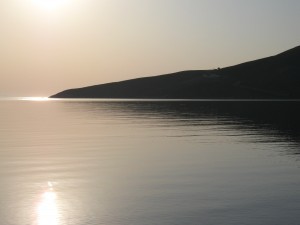 The four of us have big lunches at a taverna by the sea at Ayios Andonis where they bake their own bread and catch their own fish and add pickled local capers to the salad, and another place where they grow their own vegetables and have friendly cats. At Kastro restaurant in Megalo Horio, where I endear myself to the owner by speaking a few half-remembered words of Greek, they serve dishes of their home-reared goat and pork baked with tomatoes, and mash up their own potatoes and herbs into irresistibly melt-in-the-mouth keftedes. One evening, walking back from the restaurant toward the villa, we hear live music coming from behind trees at the end of a long garden. “D’you think that’s a bar?” asks Chris, walking toward it.
The four of us have big lunches at a taverna by the sea at Ayios Andonis where they bake their own bread and catch their own fish and add pickled local capers to the salad, and another place where they grow their own vegetables and have friendly cats. At Kastro restaurant in Megalo Horio, where I endear myself to the owner by speaking a few half-remembered words of Greek, they serve dishes of their home-reared goat and pork baked with tomatoes, and mash up their own potatoes and herbs into irresistibly melt-in-the-mouth keftedes. One evening, walking back from the restaurant toward the villa, we hear live music coming from behind trees at the end of a long garden. “D’you think that’s a bar?” asks Chris, walking toward it.
“It might just be someone’s house,” we whisper.
He keeps going, and we follow a few steps behind. Sure enough, we’ve walked onto someone’s terrace, where a man and a boy are playing traditional dance on a Greek lute and a lyra, the three-stringed fiddle. They invite us in to sit down and listen, and the man’s wife brings us a plate of melon and apple. I am delighted to have found this island.
A year later, I’m heading back to Tilos alone…
From the ferry, I see the huge semicircular blue bay, and the view I photographed last year when I was leaving, which a few months ago I put on my computer as a desktop photo to remind myself every day I’d be back: the rugged brown hillsides, the immaculate, brilliantly whitewashed houses, lush green trees and pink flowers. As we close in on the quayside, I spy a terrace with a vine beyond the Mini Market and wonder if it will be mine. There’s the deep clanking as the anchor’s chain unravels and the anchor goes down, and adults tell children to wait (Pereemeneh!) as we all cram forward to exit.
And here I am, walking up the jetty, breathing in the clear, gentle air of Tilos. It is just as I remembered it: through the square and past the bakery and five minutes after I’ve disembarked, my landlords are ready to show me around my new home. The terrace is enormous, with a vine hanging from a trellis.
By lunchtime I am lying on an empty stretch of white pebble beach, looking out at the expanse of blue bay, listening to the waves calmly stroking the shore. The water is cold, but I plunge in for a quick swim and it feels amazing. I can’t take my eyes off the view for long; life does not get much better than this. Eventually, I get up and walk.
The main road has been diverted to the back of the village and a simple pedestrian walkway follows the curve of the bay, passing the church, restaurants, rooms for rent—and I love that there are still a few fields that come right down to the waterfront too. And at any point you can step off the path onto the beach and sit in the shade of a tamarisk tree. I follow it all the way around the bay, passing the last straggle of houses at the end of the village, and follow the road up the hill. It keeps winding up, amid the sound of goats and bees, toward a little chapel that looks out over empty mountains and deep blue sea.
The white pebbles give the sea a pale topaz color, becoming darker as it gets deeper. I could happily look at this bay for the rest of my life, this perfect semicircle of deep blue, with rugged hills curved all around.
First, Catch Your Octopus…
Manolis sees me at the beach at lunchtime and comes over to join me. I was rather hoping to have some time to myself. Yawning, I tell him I stayed up too late.“I am like grandmother,” he says. “Except one night a year stay up late for paniyiri at Easter Saturday, I always have enough food and sleep. For this I will live to one hundred years.”I decide not to pursue the topic but to go for a long swim. After days of snorkeling it feels good to stretch out with long strokes across this big, open bay.
“You are swimming like a dolphin,” says Manolis. “And I swim like a duck.” I giggle. He tends to do a kind of doggy paddle in the water until he finds something of interest on the sea bed, and then dives down—a bit like a duck, it’s true. Because the bay here is mostly sandy, there’s not so much to see, only tiny fish. He has to go to other places of course to catch big fish.
“So where do you find octopus?” I ask.
“Everywhere.”
“But I mean, how do you find them?”
He pauses, thinks about how to explain. “You look for some little white rocks, is the nest, octopus hide inside.”
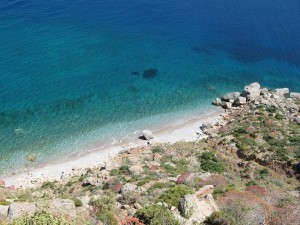 Swimming back, he dives down and finds a big, beautiful shell half buried in the sand, which he puts in the net bag he wears around his waist while swimming. I swim on ahead again for the exercise, letting my eyes wander over all the details in the mountains around. By the time I get back to my towel, I’ve been in the water for forty minutes and am ready to rest.
Swimming back, he dives down and finds a big, beautiful shell half buried in the sand, which he puts in the net bag he wears around his waist while swimming. I swim on ahead again for the exercise, letting my eyes wander over all the details in the mountains around. By the time I get back to my towel, I’ve been in the water for forty minutes and am ready to rest.
Just as I’ve taken off my aqua shoes, he beckons me to come back into the water, pointing down to the sea bed. He must have found something interesting. I dash back in, putting on the snorkel and mask again, and try to see what he’s pointing at—a rock with a little cave underneath, and something orangey-brown inside. Then suddenly he plunges down, kicking with his flippers, pulls up the rock and in a flash he is back up with a small brown octopus in his hand, which he hands over to me.I’m holding an octopus.
“Is not dangerous,” he says.
It’s small, and delicate, and the little suckers on its tentacles tickle my fingers as it writhes around gracefully. Manolis shows me how to stroke the octopus’s head, which feels incredibly soft and smooth. It crawls around my hand, ever so lightly sticking to me, and seems to be trying to decide if my hands are a comfortable new home or not. I am so excited that as I try to keep my head underwater and hold onto the octopus without hurting it, I keep swallowing water through the snorkel and half choking. Manolis takes it back and the octopus decides it’s had enough of this game, shoots purplish-black ink at us, and makes its escape down to the deep.When I come up for air and can breathe normally again, I am still giggling and have a big grin on my face.
“Thank you!”
“Is only small one, half-kilo. It is illegal to take this out. But I want to show you. You look like a little child when you take the octopus.”
About the Author: Jennifer Barclay is the author of Falling in Honey (published by Sourcebooks in the US and Canada, and Summersdale in the UK)
The post How Tilos; a Tiny Greek Island Stole My Heart appeared first on We Said Go Travel.
May 25, 2014
Exploring Myanmar: Traveling the Dusty Roads of the New Burma
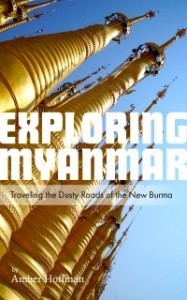 We waited somewhat impatiently for our complimentary transport, from our hotel in Mandalay to the highway bus stop, for our overnight journey to the Inle Lake area. We had a lovely VIP bus ride from Yangon to Mandalay, with only three seats across, air conditioning, private TVs with English movies and a welcoming hostess to help us out. Our bus to Inle had none of these luxuries.
We waited somewhat impatiently for our complimentary transport, from our hotel in Mandalay to the highway bus stop, for our overnight journey to the Inle Lake area. We had a lovely VIP bus ride from Yangon to Mandalay, with only three seats across, air conditioning, private TVs with English movies and a welcoming hostess to help us out. Our bus to Inle had none of these luxuries.
I was told there were no VIP buses going to Inle, or more specifically Taunggyi, the capital of the Shan State, in Eastern Myanmar. To get to Nyaungshwe, the jumping off point for the lake, the bus drops you off at Shwenyaung (Nyaungshwe in reverse), a small town just north, also referred to as the “Junction.” With a scheduled departure of 6:30 p.m. from Mandalay, the estimated arrival time at this road side junction was set for 2:30 a.m. I was not expecting much sleep that night.If there were no VIP buses, I at least tried to ensure air conditioning. The pleasant lady who sold tickets at the hotel said yes to the air conditioning. When purchasing the tickets I also used the words tourist bus, express bus, and direct bus, to try to convey I was willing to pay a few bucks more for a little more comfort. The hotel automatically booked us with their regular bus company – Golden Moon. There was nothing golden about it.
The tickets cost about $13 a piece, including the complimentary transport, which turned out to be a pick up style taxi, a lain ka, with a row of benches on either side of the back, open aired, but covered from the sun. A young couple with a small child, a few backpackers, and some more locals were piled in the back of the truck with us, all with luggage and packages. I held onto the bars on the side of the truck, or on the roof for support. When the driver suddenly stopped at an intersection, we all fell forward with such a thrust that I almost tore my arm from its socket, as I grasped the bar on the roof to keep me from crushing the small child in front of me.
Mandalay is a dusty place, like most of Myanmar, particularly at the end of the dry season. It is a commercial center and certainly is not the most attractive stop in Myanmar. The 30 minute drive from the city center up to the highway in the open aired lain ka left me feeling dirty, just what you want before boarding an eight hour overnight bus. There was so much dirt in the air on the lain ka that at some points I covered my mouth and nose with my t-shirt.
The bus station seemed to be in a dust bowl, the sunset-tinted sky highlighting the clouds of smoke and haze. There were buses and people everywhere – passengers of all walks, vendors, food stalls. It was unorganized and happenstance. If Golden Moon had not dropped us off, I wondered if we ever would have made it out of there.
We pulled up to the Golden Moon bus and all I thought was lovely, with a sarcasm that I have perfected inside my own head. The bus was certainly not VIP. It was decades old, the upholstered seats were surprisingly sandy, considering we were nowhere near a beach. The seats we were assigned were not exactly comfortable, with a large metal bar located where the seat and back met. There were nasty large ashtrays on the seat back in front of us, and everything just felt dirty. There was a
strange staleness to the air. Hardly VIP.
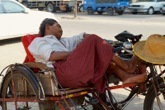 Because there were no toilets in sight, I left the bus to pour some water on my hands and face, an attempt to clean the dust from my body before hunkering down for the night. A futile attempt, as it turned out.
Because there were no toilets in sight, I left the bus to pour some water on my hands and face, an attempt to clean the dust from my body before hunkering down for the night. A futile attempt, as it turned out.
The air conditioning was on, barely, but it seemed to be cooling down. As the bus continued to fill and I prayed people would not be placed on the jump seats, or fold up seats, placed in the aisle, all I felt was the vibration under my feet – it seemed like an airplane engine under foot. Although I joked that I could appreciate the foot massage, I was prepared not to sleep a wink on the eight-hour journey.
After about 30 minutes, the bus stalled. We had not even left the station. As the bus crew tried to start the engine again, a young kid pulled up a hatch on the floor under the seats across the aisle from us. He was tinkering with the engine, or the air conditioning, I could not tell which. I caught a whiff of gasoline, which added to the atmosphere of the Golden Moon bus. The tinkering of the engine underfoot continued a few more times, along with an added bit of drama involving an employee attempting to get the ancient TV and DVD player working – to show a black and white Burmese movie. At first it looked like a military sponsored PSA against opium, but then it turned into some loud soap opera. The sound crackled, and the screen flickered, so that you could not entirely hear or see the movie, but it did not stop them from blaring it for hours.
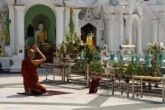 After a few failed attempts at fixing the air conditioning, the task was aborted. The windows were quickly opened and we started to pull away. We stalled at least three times before leaving the station. It was not looking good. The good news was that the rumbling under our feet ceased – apparently it was tied to the air conditioning unit. The bad news was that we would be driving with no air conditioning, with the windows opened, through the dustiest country in Southeast Asia.
After a few failed attempts at fixing the air conditioning, the task was aborted. The windows were quickly opened and we started to pull away. We stalled at least three times before leaving the station. It was not looking good. The good news was that the rumbling under our feet ceased – apparently it was tied to the air conditioning unit. The bad news was that we would be driving with no air conditioning, with the windows opened, through the dustiest country in Southeast Asia.
Within a half hour I was gasping for breath, blowing nasties from my nose, rubbing my eyes, and continuously cleaning the layer of dirt from my face.Twenty minutes into the dusty ride, we pulled over. Not sure why. It seemed we stalled. The TV continued to blare. After some time, people started to get out. My husband and traveling companion, Eric, went outside to try to figure out what was going on. As a six foot, four inch, 235 pound white guy with blonde hair and blue eyes – he stuck out like a sore thumb on the side of the road. But, I just wondered whether we would officially leave the city limits of Mandalay, and what the chances were that we would make it to Inle Lake.
I could not tell if the bus was broken, which was a definite possibility considering the number of times the bus had already stalled. I made a call to a Burmese contact in Inle to ask her to speak to the driver to figure things out. At this point, before we got too much into the country side, I thought about hitching a ride back to the city and hiring a driver, or staying another night and finding a different bus company, with a fully functioning bus, for the following day. The bus had stopped in a deserted and dark section of the roadway, making the possibility of a safe exit remote. At that point, though, I was willing to make a go of it.
Our contact informed us that a passenger had missed the bus, we were waiting for the passenger, they would be there soon, the bus was okay, and we would make it to the Junction at 3:30 a.m. No problem.
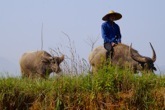 We boarded the bus once again and waited for a while. No additional passenger boarded, but suddenly we were on our way. A very vocal young Burmese mom, with her little son on board, was throwing a fit to the driver – being very assertive about the situation. I was proud of her. Between the mom, a few other passengers’ complaints, and the existence of the blond giant, perhaps the driver thought it was time to get moving.
We boarded the bus once again and waited for a while. No additional passenger boarded, but suddenly we were on our way. A very vocal young Burmese mom, with her little son on board, was throwing a fit to the driver – being very assertive about the situation. I was proud of her. Between the mom, a few other passengers’ complaints, and the existence of the blond giant, perhaps the driver thought it was time to get moving.
I tried to plug in my iPod headphones, and attempted to block out the noise. I closed my eyes to avoid the dust, and propped my head up with a scarf and a sarong. I tried to convince myself that eight hours was not an eternity and that I would arrive on the other end stronger for the experience.
About the Author: After 10 years as an attorney, Amber left her job at the largest law firm in the world and decided to start living her life. She is now a recovering tax lawyer, perpetual nomad, intrepid foodie, yoga teacher and traveling the world. She plans, Eric follows, and after 65 countries and 12 years of marriage, she wants to share their travel tales with the world. Amber is currently stalled in Ubud, Bali, and is the author of Exploring Myanmar: Traveling the Dusty Roads of the New Burma.
The post Exploring Myanmar: Traveling the Dusty Roads of the New Burma appeared first on We Said Go Travel.
We Said Go Travel
We Said Go Travel is a global community of over sixteen hundred writers with articles from every continent.
Stories are shared with photos and video from a perspective of the transformative power of travel. We Said Go Travel has hosted live and online events as well as travel writing contests around the world. ...more
- Lisa Niver's profile
- 57 followers


